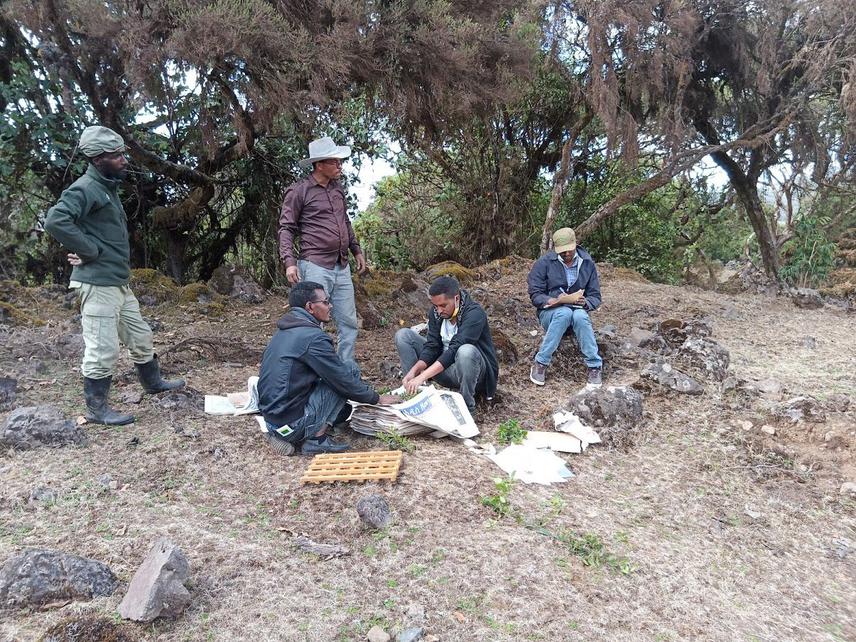Talemos Seta Shanka
Other projects
12 Oct 2020
Ex-Situ Conservation of Ex-Situ Conservation of Selected Endemic and Threatened Plants in Gullele Botanic Garden, Addis Ababa, Ethiopia
1 Feb 2022
Ex-situ Conservation of Six Threatened and Endemic Plant Species in Gullele and Dilla University Botanic Gardens, Ethiopia
To determine the floristic diversity with associated threat factors, and carbon stocks of forest fragments/patches of Gurage Mountain Chains, Ethiopia

The field team working in the field (pressing of dry specimens for Maytenus harenensis and other species to deposit in the Herbarium of Gullele Botanic Garden).
Ethiopian forests are highly subjected to degradation by anthropogenic effects and persist as forest fragments. The remnant forests of the country need to be quantified for floristic composition and diversity, and carbon stocks potential with exploring the threat factors for developing better forest conservation strategies. Accordingly, the present study will be conducted on the forest patches of Gurage Mountain Chains, Ethiopia. The Biteyu forest patches selected for the study from the mountain chains is very important as a watershed and water source for thousands of people living in the western escarpment of central Rift valley, Ethiopia. The project is aimed at determining the floristic diversity with associated threat factors, and carbon stocks of forest patches of Gurage Mountain Chains.
Systematic sampling technique will be used for vegetation and environmental data collection following Muller-Dombois and Ellenberg (1974) and Kent and Coker (1992). A square sample plots of 30 x 30 m = 900 m2 will be established to collect data for larger trees with a DBH ≥ 2.5 cm at certain altitudinal gradients. Subplots of 5 m x 5 m and 1mx1m will be established in the main plot for plants with a DBH of <2.5 cm and forest floor respectively. Voucher specimens will be brought to the National Herbarium (ETH) for identification.
An appropriate allometric model that fits the climate zones of the study area will be selected for AGB estimation. The total biomass in each tree species will be calculated and biomass of all the trees will be summed up to get total carbon stock in each plot and then converted to hectare by using conversion factor. The biomass stock density of a sampling plot will be multiplied with carbon fraction of 0.50, as the dry mass contains 50% organic carbon. The biomass carbon found in litter and dead wood will be computed followed by methods described in Pearson et al. (2005).
Belowground biomass will be estimated from AGB using the relationship derived for the tropics by Cairns et al. (1997): BGB = exp (-1.0587 + 0.8836 ln ABG). Soil samples will be taken from soil depths of 0–10, 10–20, and 20–30 cm after collecting litter samples from the soil surface. Undisturbed soil from the same depth intervals using a soil-sampling cylinder (25 cm2 × 5 cm) will be collected for bulky density. The data collected will be analyzed using various data analysis tools.